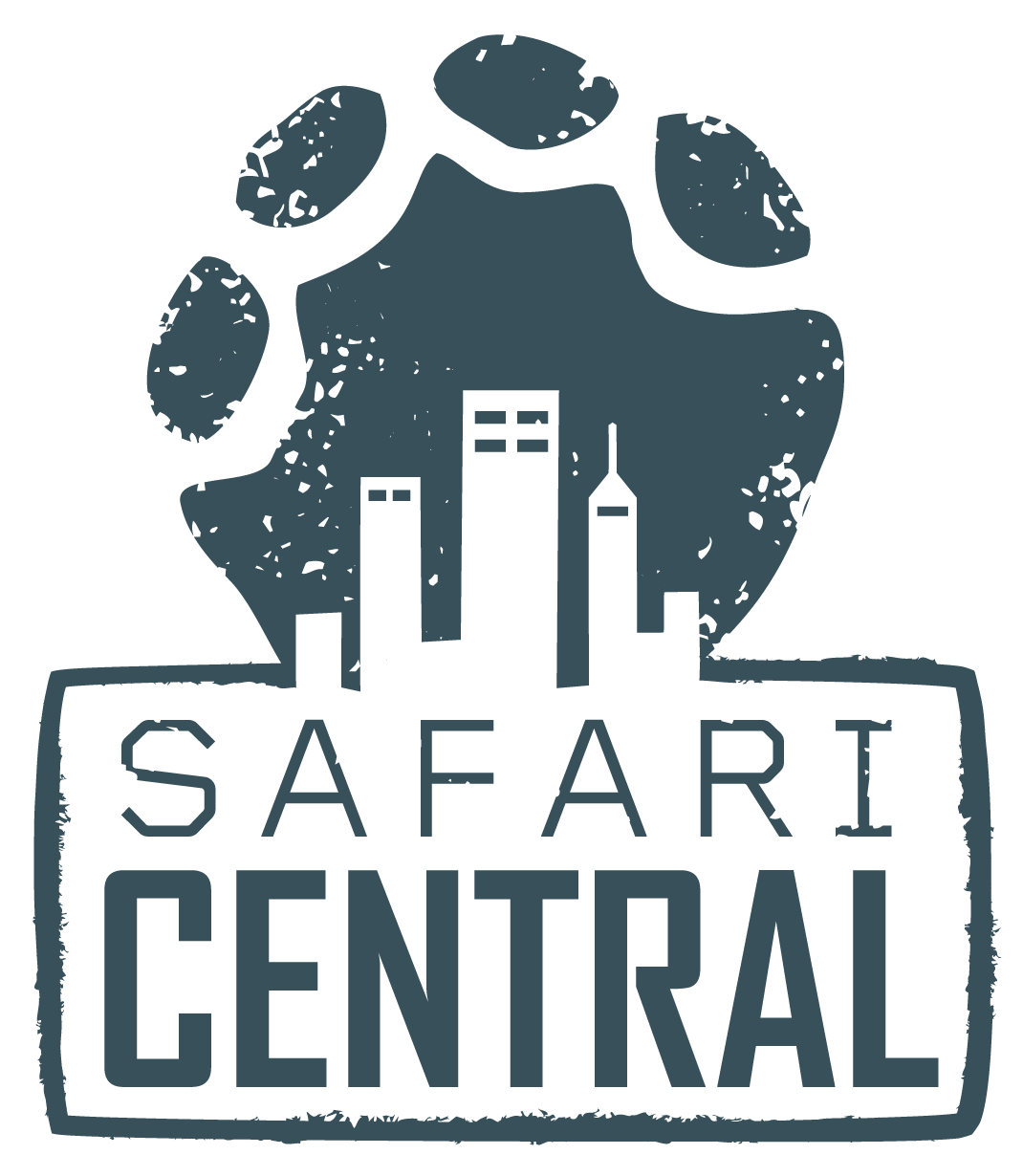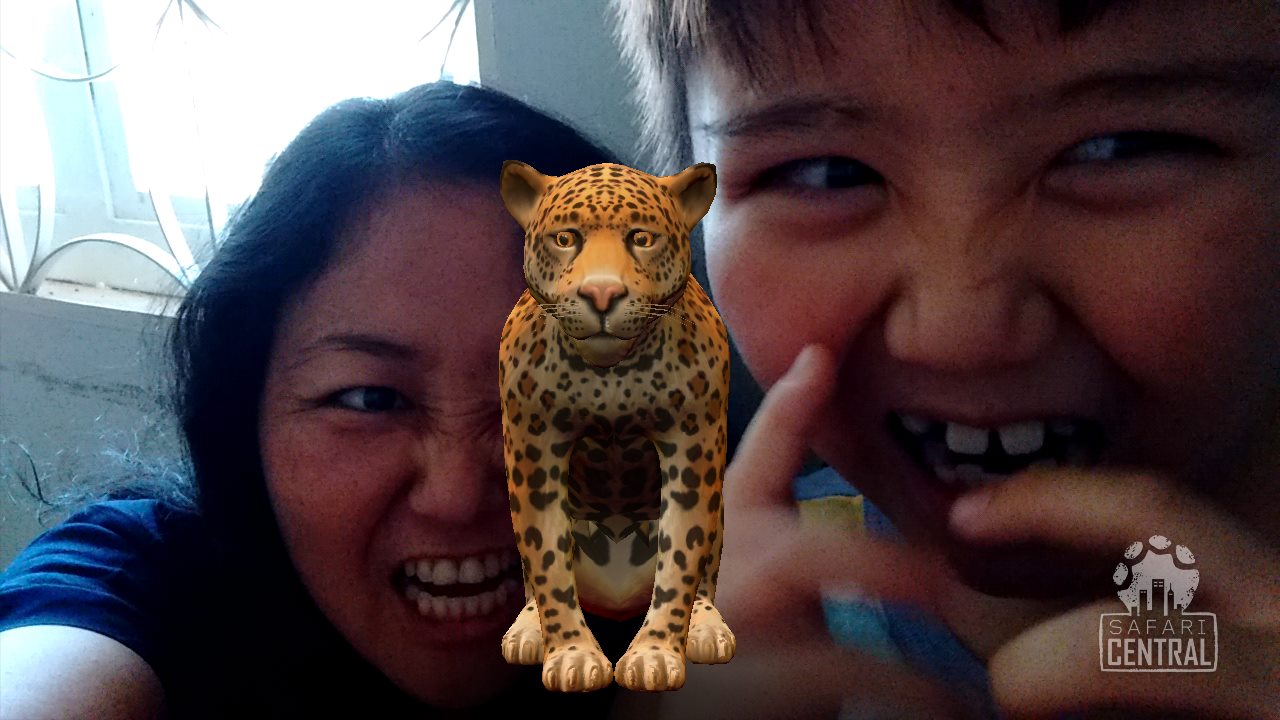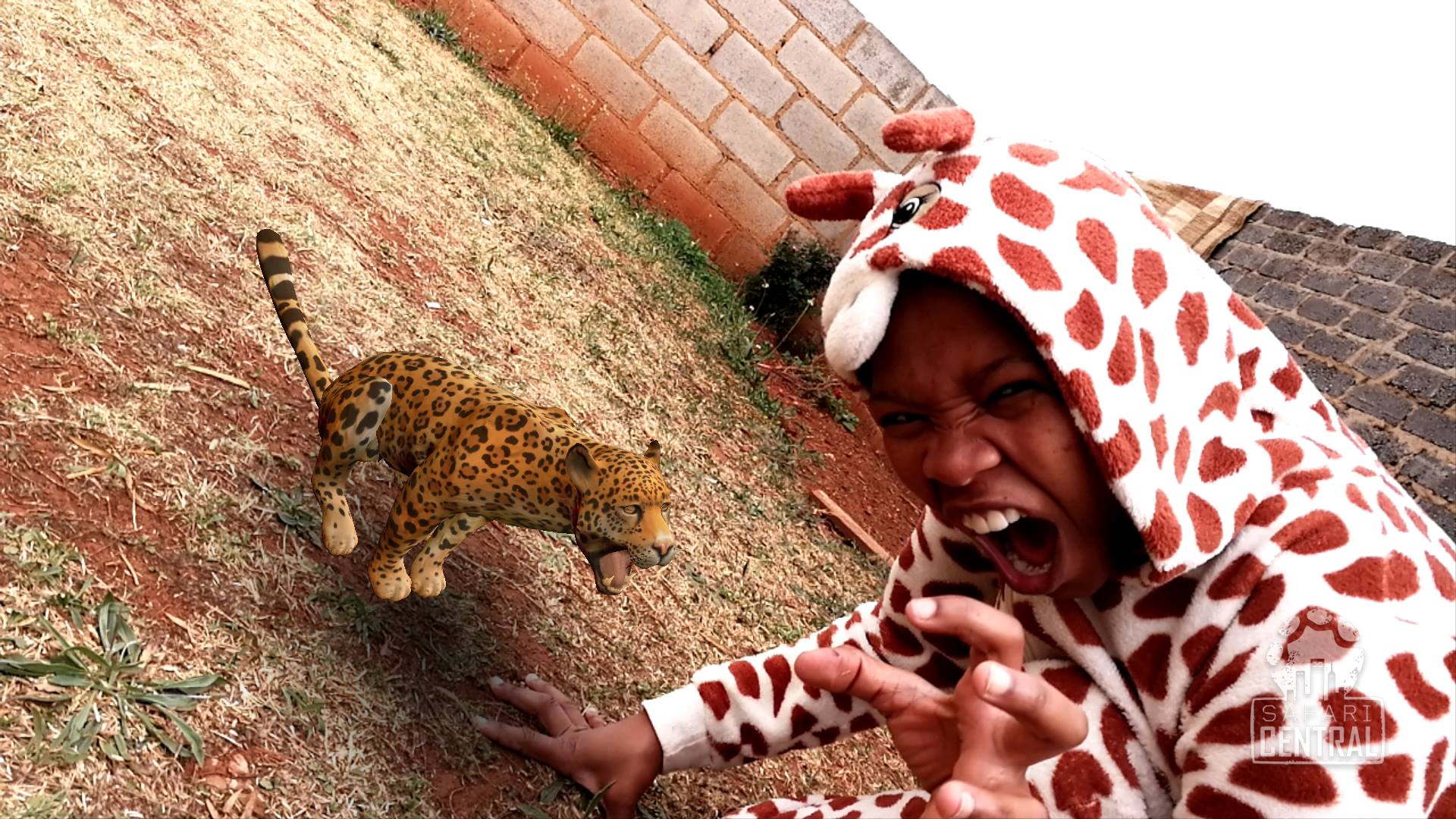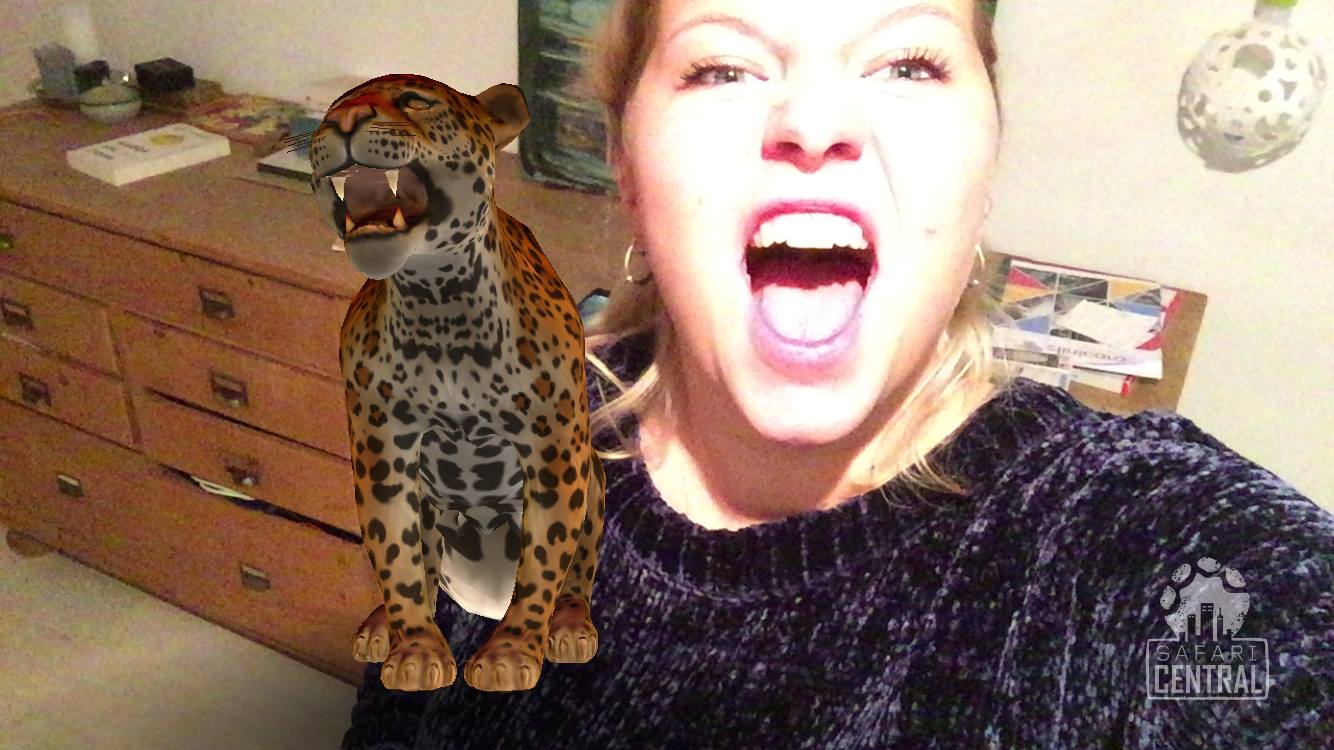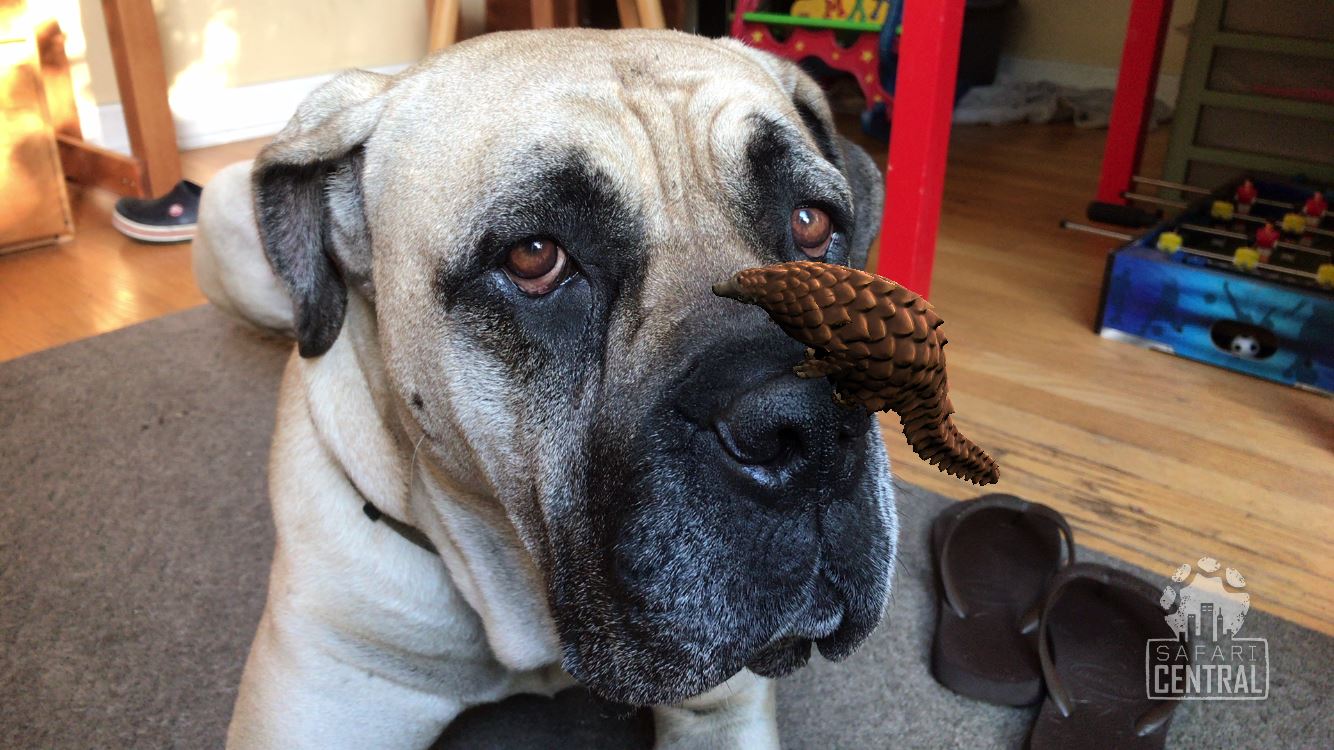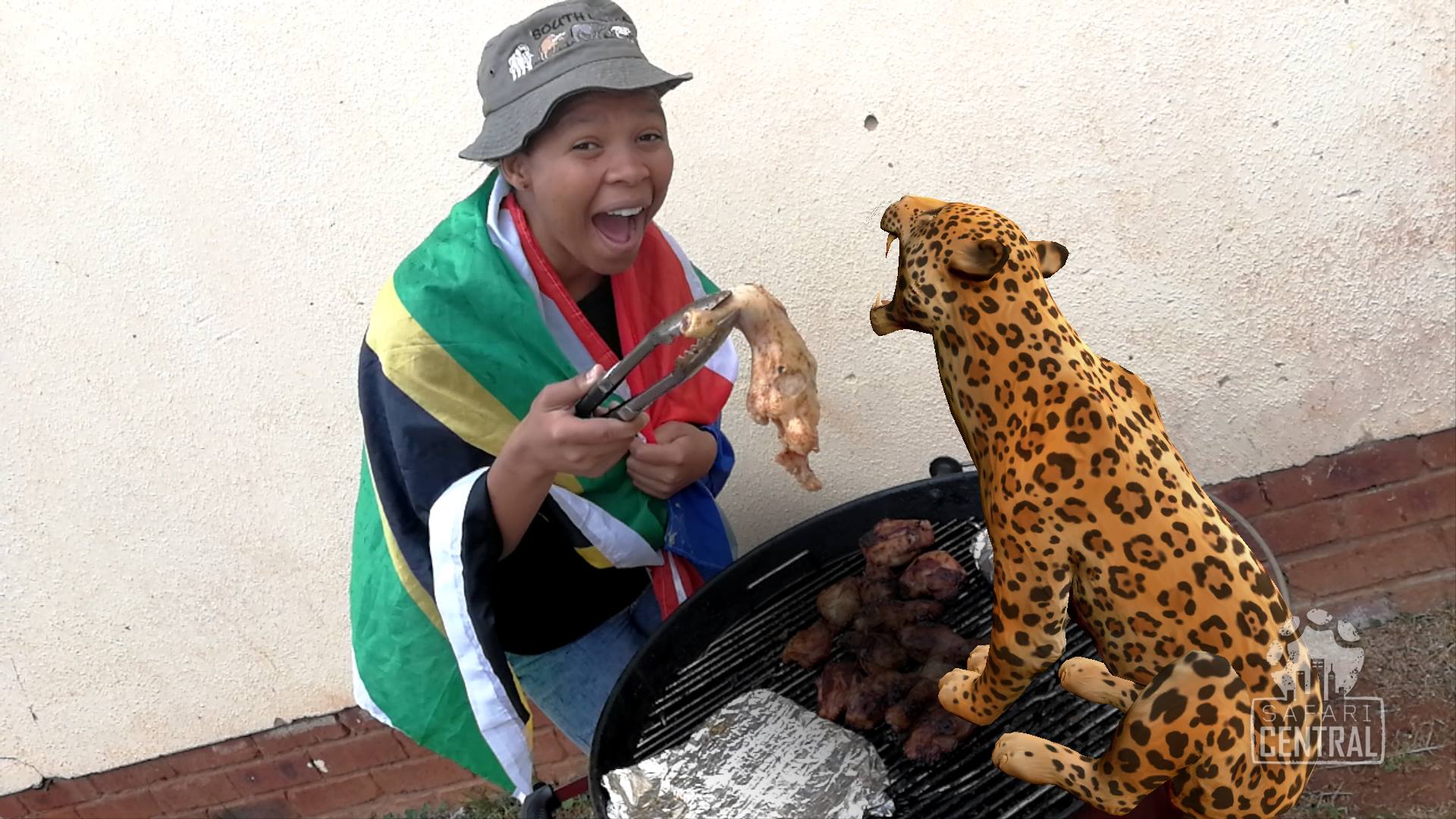This AR star has earned her spots
Female jaguars are real girl bosses: they have to care for and protect their cubs, and do all of the hunting, all on their own! Atiaia, (ah-tee-eye-ah) meaning “the one who brings light,” is one of the few remaining jaguars in the Iguacu National Park in Brasil, and one of the favourite animals of our players, judging by the dozens of photos made with her in the app.
The Iguaçu Carnivores Project, supported by Pró-Carnívoros and WWF-Brazil, closely monitors jaguars like Atiaia in order to safeguard the health of the entire Iguaçu ecosystem. This is how we come to know quite a bit about Atiaia's life.
Atiaia is a very calm jaguar, good mother and very careful with her cubs. Jaguars stay with their cubs approximately until they are 2 years old, teaching them to hunt and survive alone. Atiaia is not frightened by the tourists, who are quite delighted when they can see her. Atiaia is quite the local star, drawing public attention to the magnificence of her species via camera trap images, which scientists use to understand her behaviour. Recent sightings show Atiaia with a new cub, providing hope for all who are following her story.
Above is a video captured by a camera trap of Atiaia in September of 2015. Footage and data of wildlife is usually reserved only for researchers and science, but WWF and Pro-Carnivores are sharing Atiaia's story for people around the world to get a better insight into her life and understand why jaguars like Atiaia need our protection.
Atiaia as an AR star
Creating an Augmented Reality version of Atiaia for Safari Central was quite a challenge: the spot pattern and walk have to be just right. We bring Atiaia to a global audience through games because we believe they are key to creating connections between people and animals, and to get more people involved in conservation.
Users of our app seem to have a soft spot for this fierce lady. Of all the animals featured in the app, Atiaia is used most often. Do you want to take a photo with her? Download our app through the Apple App Store or Google Play.
Jaguar facts
- The jaguar is the largest cat and the top terrestrial predator in central and South America. Its diet consists of deer, peccaries and other small vertebrates.
Jaguars do not meow like most felids; they emit a series of very strong snores, which are called ‘roars’.
Forest loss and fragmentation have been the main causes of the decline in jaguar populations, but poaching, conflicts with livestock farmers, and roadkills pose additional threats.
It is estimated that only 200 jaguars remain in the South American Atlantic Forest.
The jaguar is considered an ‘umbrella species,’ in that its large territorial requirements encompass those of other species. So, focusing on protecting the habitat of jaguars is an efficient way to protect the diversity of the entire system.
The Atlantic Forest: Atiaia's home
Once covering nearly one tenth of the South American continent, currently the Atlantic Forest is a fragile treasure, significantly reduced in its extension and scattered in hundreds of thousands of fragments. While it remains one of the most diverse, rich and distinct forests on Earth, it will require an enormous effort from society to ensure its continuing existence for the coming generations. Composed of tropical and subtropical rainforests, the Atlantic Forest is actually a complex of 15 terrestrial ecoregions, stretching along the Brazilian Atlantic coast, and inland to north-eastern Argentina and eastern Paraguay. The lands originally covered by the Atlantic Forest are today predominantly a human-modified landscape, retaining only 16.8 per cent of the original forests. The Atlantic Forest possesses not only an extraordinary diversity of species, but also an exceptionally high number of endemic species - species which are not found anywhere else on Earth. The importance of this ecoregion for global biodiversity is extraordinary: 7% of the Earth’s plant species and 5% of its vertebrate species are found in the Atlantic Forest. 443 species of trees were recorded in just one hectare!
This noteworthy biological richness must coexist with a highly concentrated human population, particularly in Brazil.
Two of the 30 largest cities in the world – Sao Paulo and Rio de Janeiro – are located in the heart of the Atlantic Forest. The growing population here places enormous pressure on the Atlantic Forest's ability to sustain diversity and health for both animals and humans.
How our conservation partners protect Atiaia
Another image from Atiaia, while she is on the prowl at night.
Pró-Carnívoros, WWF-Brazil, and Vida Silvestre Argentina initiated an intense effort in 2003 aimed at securing the survival of the jaguar population in the cross border area of Argentina, Brazil, and Paraguay. Since then, there has been an increase in the jaguar population, thanks to the collaborative efforts between non profit organizations, researchers, and the public.
Your donation to Pró-Carnívoros goes directly to land management efforts which use camera trap monitoring to identify and protect key habitats and corridors essential for jaguars like Atiaia and her new cubs.
Try the app
Do you want to play around with Atiaia yourself? Download Safari Central from the App Store or Google Play!
